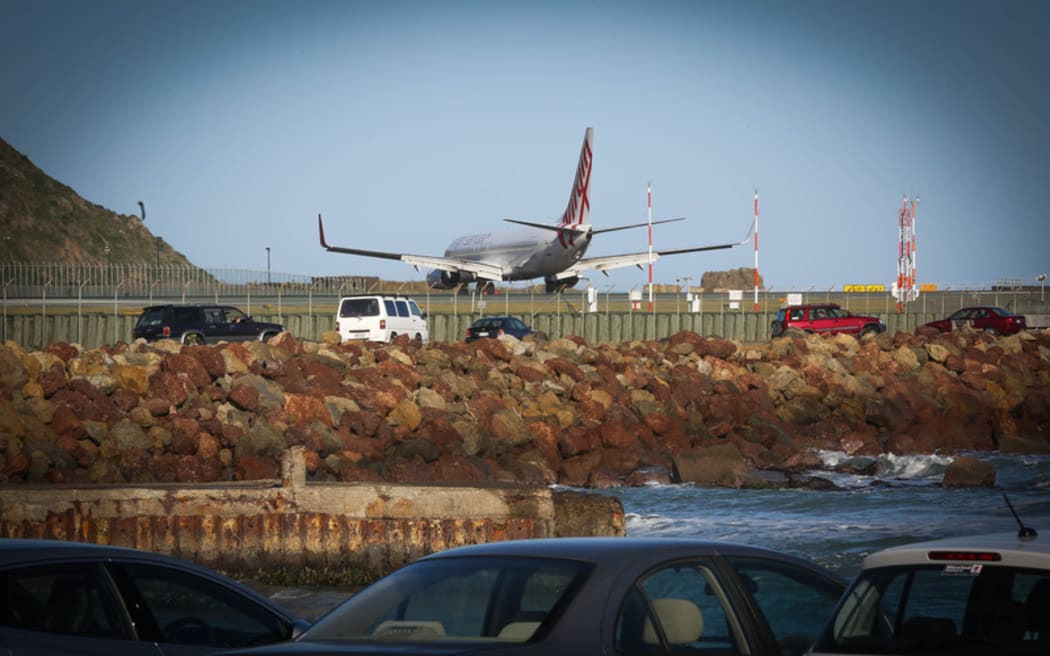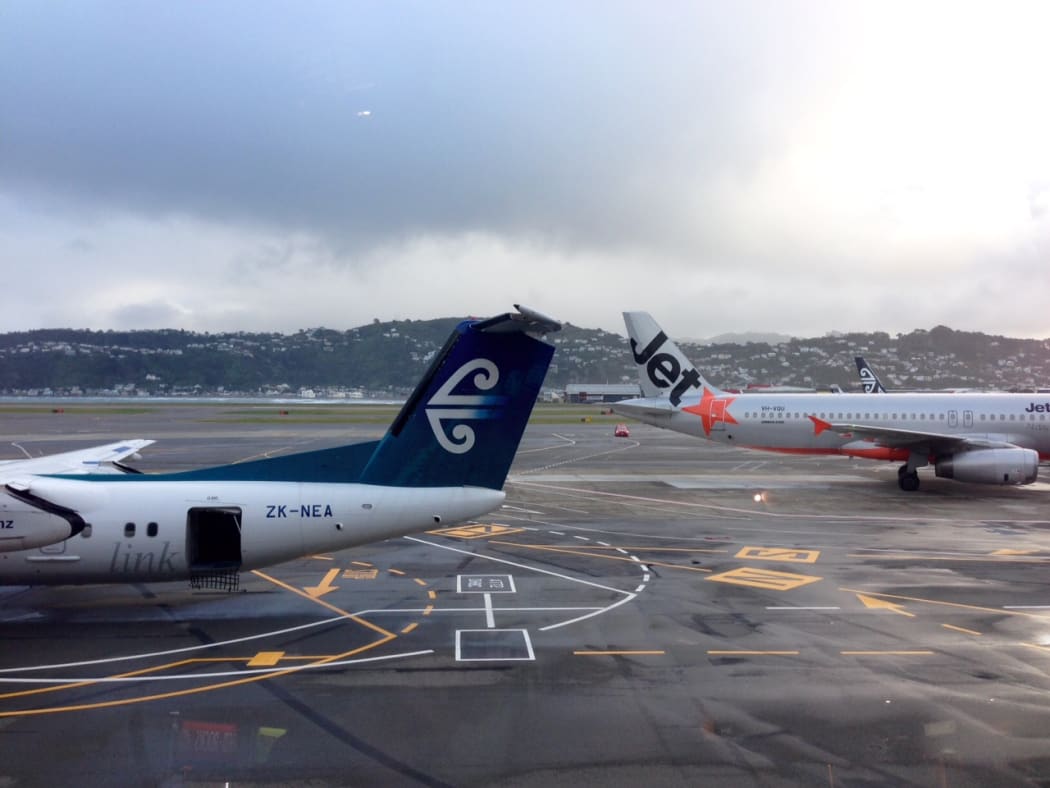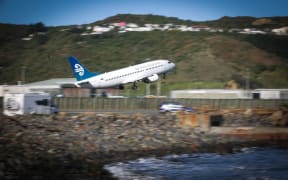A plane is 29 times more likely to overshoot the runway at Wellington Airport than at Auckland, the High Court in Wellington has been told.

A plane lands at Wellington Airport earlier in 2015. Photo: RNZ / Alexander Robertson
The New Zealand Airline Pilots' Association has gone to court asking for long safety margins at the end of the runway if the Wellington Airport company goes ahead with plans to extend it 300m into Cook Strait to the south so it can accommodate long haul passenger planes from Asia. The proposal still needs to be approved.
The scheme will cost $300 million and there are fears adding a 240m safety margin would be uneconomic.
But pilots' counsel Hugh Rennie, QC, rejected those arguments.
"The moment you start saying safety will be whatever you can justify on a cost benefit analysis, there are many, many examples," Mr Rennie said.
"You might not put signs on bridges because no one ever goes off the edge of them, you might go for cheaper buildings. The objective across the whole thing is the safety objective."

Photo: RNZ / Alexander Robertson
No aircraft had overrun Wellington runway since the 1960s but Mr Rennie said if it happened again, the results could be tragic.
Landing a plane in Wellington was hard enough already, given the challenges posed by the weather and the terrain, and the chance of an overshoot was 29 times greater than in Auckland.
"Wellington Airport is widely considered by pilots to be a very challenging airport for a number of reasons including strong gusty and unpredictable wind conditions, surrounding high terrain, its relatively short single runway, and the particular hazards at either end of the runway, the drop into Cobham Drive to the north, and the steep drop into Lyall Bay to the south."
Mr Rennie said the runway extension would not be long enough, and the pilots were asking the High Court for an order for a special safety area to be put on the end. This should be 240m long, and the pilots wanted the court to rule that this was required by law.
An alternative could be an equivalent solution such as crushable concrete.
Part 139 of the Civil Aviation Rules said a safety strip must extend to a distance of at least 90m and, if practicable, to a distance of at least 240m from the end of the runway strip.
Mr Rennie said the Civil Aviation Authority (CAA) was letting the airport go ahead with the runway extension, without extending the safety area.
However, safety had to be maintained; cardboard crash barriers were not used on motorways because proper ones were too expensive, he said.
There needed to be clarity about what the law said on safety zones, and the finding of the court would become a precedent which applied to other New Zealand airport.



